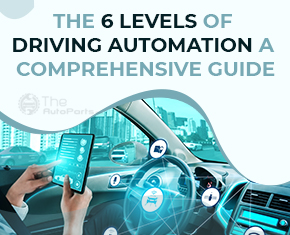Today’s automobiles include a wide variety of driver’s aid systems. The range of these includes standard cruise control, adaptive cruise control, and even vehicles that can change lanes for you and can even navigate you along winding back roads. There has to be a clear explanation of how each car matches each degree of self-driving autonomy, between Tesla’s Autopilot and Mercede’s outstanding self-driving technology.
Here is what we now know about the many types and degrees of self-driving cars.
What Levels of Self-Driving Exist?
Information on the various degrees of driving automation has been made available by the Society of Automotive Engineers. Governments and consumers may both benefit from a greater understanding of the technical intricacies in each category thanks to this information. For instance, whereas other degrees of autonomy offer cars without a steering wheel or pedals that allow the driver to effectively take sleep, some categories demand that the driver pay complete attention to the road.
The 6 levels of automated driving, from no driver assistance, features to completely autonomous cars, are listed below:
Level 0: No Driving Automation
This set is quite straightforward. There is no dynamic driving aid technology available in these cars. Instead, the driver handles all critical actions including driving, parking, braking, and acceleration himself.
However, level 0 cars are still capable of some vehicle intervention. This covers features like blind-spot monitoring, automated emergency braking, and even lane-keep assistance. These driver-aid systems are categorized as level 0 since they do not really operate the car; rather, they just notify the driver and, in some circumstances, can stop automatically.
Level 1: Driver Assistance
Simple features like cruise control, whether adaptive or not, or tools that help the driver steer or brake fall under this category.
The driver must continue to pay great attention to the road and their surroundings even if the car can adjust its speed and following distance based on the car in front of them. Every time something goes wrong, they have to step in.
The ability to direct the driver back into the lane if they start to steer off the road is another driver aid function in level 1 autonomy. Level 2 driver autonomy is described in the following section and refers to a vehicle that combines acceleration, braking, and steering assistance.
Level 2: Automated Driving in Part
As mentioned before, level 2 automation includes a few driver assistance technologies together, such as adaptive cruise control and steering correction.
Highway driver aid is another illustration of partial driving automation. Many automobiles, including Mercedes and Hyundai, have this capability. Highway driver assistance enables the car to autonomously accelerate, decelerate, and maintain its lane position.
Level 3: Conditional Driving Automation
The third degree of driving automation allows for steering, braking, and accelerating adjustments based on the surrounding environment. Extra sensors and cameras are put into these cars to help them detect environmental changes. The vehicle may change lanes for its driver automatically with the use of this extra technology, which lets the vehicle detect automobiles in the lanes adjacent to them.
Even with this level of automation, the driver must remain vigilant and take action when the system inevitably makes mistakes.
Level 4: High Driving Automation
Most people envision Level 4 self-driving as the future of autonomous driving. In Level 4, there is no need for driver interaction because the car is set up to halt if a system fails. At this stage of automation, the driver may take a nap while the car drives itself and a steering wheel and pedals are not required.
Level 5: Full Driving Automation
This is the amount of automation that future-set films suggest will exist. No driver participation is necessary. The vehicle is not tied to a certain region and may operate in all weather. Self-driving technology must be excellent for level 5 driving automation to exist in our environment.
When Will Completely Autonomous Cars Enter the Road?
As of this write-up, it is challenging for vehicles equipped with self-driving technology to reach level 3 of autonomy. Governments are having trouble understanding the law of who is responsible if the system fails and other concerns, despite the fact that the technology exists.
Today’s majority of cars operate at level 0, which means that drivers make all of the choices. Thousands of accidents are still caused by distracted driving each year. Level 5 completely self-driving vehicles will thus remain a pipe dream for years to come unless all vehicles on the road are able to drive themselves and are connected to one another.
